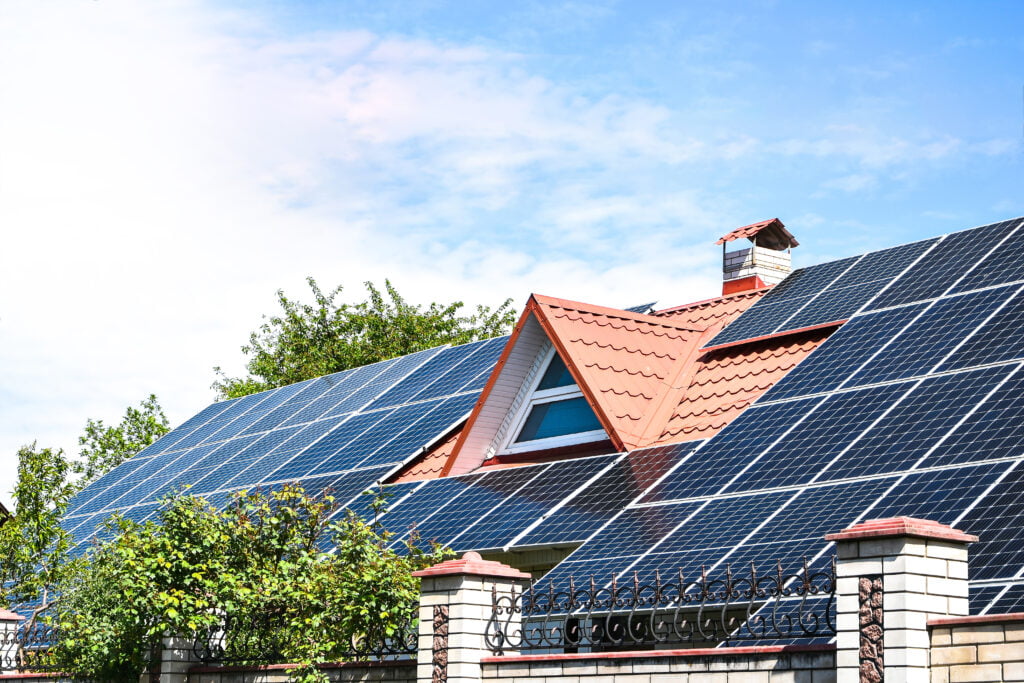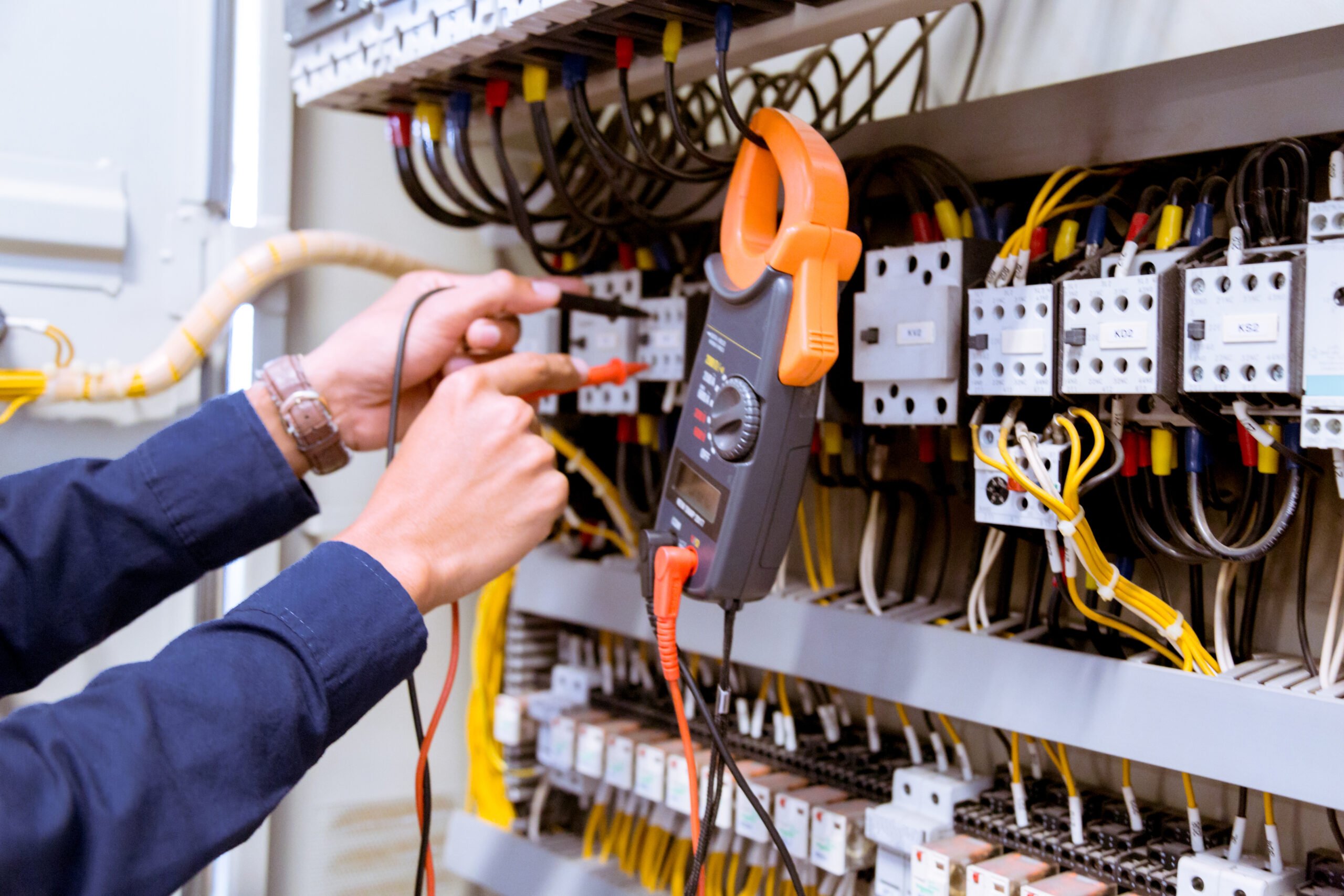Grid Sharing Defined
The future of energy is here. With the emergence of new technology, grid sharing is at the forefront of a more sustainable and efficient way to produce and consume energy. Grid sharing allows multiple users to access and contribute power to one common grid, providing advantages that will revolutionize how we generate electricity.
Not only can this system reduce our collective reliance on fossil fuels. It can also create opportunities for consumers to sell any excess energy they produce back into the main grid. This process has already begun in places like Germany and California. Homeowners have transformed their properties into mini-power plants for others to access. They have connected solar panels or turbines to the local grid. By making use of renewable energy sources such as wind or sun, homeowners are not just saving money on their own electricity bills but are helping support an entire community with clean power.

What is Grid Sharing
Grid sharing is a concept that has recently become popular in the renewable energy industry. It’s a method of connecting multiple sources of electricity, such as solar panels, wind turbines, and generators, to one grid. This enables people to use their own electricity sources to power their homes or businesses without relying on their local utility company.
Grid sharing works by allowing users to pool their resources into one large grid. Everyone can access the same electricity supply regardless of where they live or what type of energy they generate. This means that individuals who have installed solar panels can contribute excess energy back into the shared network instead of throwing it away. Those who don’t have access to renewable sources can still benefit from green energy options provided by others in their community.
Benefits of Grid Sharing
This interconnection of power systems enables more efficient use of energy resources. It results in benefits such as improved system reliability and reduced costs.
Grid sharing allows electricity to be exchanged between countries, regions, and even continents. This can have positive effects on the environment. By pooling resources together, it may reduce the need to build new power plants or large-scale infrastructure projects that would otherwise have been necessary.
Another benefit that comes with grid sharing is increased system stability and reliability. By connecting multiple grids, operators gain access to a larger network of electricity sources in case one source fails or experiences issues with supply levels.
Challenges of Grid Sharing
The advent of the modern electric grid has enabled us to share power and resources more effectively than ever before. Grid sharing is an important part of our energy infrastructure. It allows for economies of scale, cost savings, and better utilization of power around the globe. But there are still a few challenges. And they must be addressed to fully unlock the potential power in grid sharing.
Unifying a Platform
One challenge lies in creating a unified platform that allows for efficient and secure exchanges between different energy providers. This platform should enable users to buy and sell electricity from multiple sources seamlessly, without worrying about security or reliability issues. Additionally, it must allow for efficient data collection so that users can make informed decisions about their energy purchases.
Balancing Demand
Firstly, another one of the biggest challenges is making sure that the electricity demand from various users is balanced and managed properly. For this to happen, there needs to be a certain level of coordination between all parties involved. This is in order to ensure that everyone gets an equitable share of resources. Additionally, any changes or upgrades made by one user must also be implemented across the entire network in order for the system as a whole to stay functional.
Balancing Costs
Another issue arises when dealing with different pricing options between users within the same grid. This can often lead to unfair prices being charged which can cause disputes over who should pay what amount. In addition to this, the cost of using the system can vary depending on the number of users in a given network. As you might expect, larger networks tend to be more expensive than smaller ones.
Types of Grid Sharing
Grid sharing is an effective way of using energy more efficiently by allowing multiple users to access the same grid. Through grid sharing, electricity can be transferred to areas in need of energy. While simultaneously making sure that those who have extra energy can put it to use. There are several different types of grid sharing that have become popular over the years. There are three main types of grid-sharing solutions: distributed generation, shared storage, and peer-to-peer trading.
Distributed Generation
Distributed generation is a term used to describe the practice of generating electricity locally, rather than relying solely on traditional power grids. This type of grid sharing has many benefits for both individuals and communities.
For starters, it allows for greater autonomy in terms of energy production. This allows people to produce their own power from local sources such as solar panels or wind turbines. This not only reduces reliance on centralized utilities but also leads to lower electricity bills. Additionally, distributed generation can help reduce the carbon footprint of an area. It provides clean renewable energy that does not rely on fossil fuels like coal or natural gas. Finally, it can provide a stable and reliable source of electricity during outages caused by storms or other events that disrupt traditional power grids.
Shared Storage
Shared storage in electricity is becoming the new normal, allowing for energy grid sharing between countries and even households. This means that energy can be stored on a larger scale. It can slowly be shared among different countries or households, to keep up with demand. Shared storage allows multiple users to store excess energy in batteries or other forms of storage so they can access it when needed without having to draw from the grid.
The idea of grid sharing has been around for some time now. However, shared storage makes it more cost-efficient and reliable to transport electricity across borders. With this technology, countries will be able to store excess electricity during peak hours. They can then use it when needed during off-peak hours. It also allows households to purchase renewable energy from other homes at a cheaper price than they could otherwise afford.
This advancement in energy storage technology is helping create a more sustainable future in two ways. By reducing our reliance on fossil fuels. And increasing the use of renewable sources of power such as wind turbines and solar panels.
Peer-to-Peer Trading
Peer-to-peer trading in electricity is an innovative concept that has the potential to revolutionize the way we consume energy. By allowing users to buy and sell energy directly from one another, it could mean more efficient use of existing resources and a major shift away from traditional centralized grids.
The idea behind peer-to-peer (P2P) trading is simple. It allows individuals or groups of people to trade electricity with each other without having to go through an intermediary such as a utility company. This means consumers can benefit from lower prices. As they don’t have to pay for middleman fees and are able to access cheaper sources of energy. Furthermore, grid sharing also opens up opportunities for renewable energy sources like solar power and wind turbines. These can be used more efficiently when connected directly between consumers in their own community networks.
Potential Dangers of Grid Sharing
Grid sharing is becoming increasingly popular – but it’s not without its risks. By connecting to a grid, you’re exposing your energy system to interference from other users on the same grid. As well as the potential for cyber-attacks. While these threats can sound scary, there are ways to protect yourself. You can reduce the chances of any malicious activity taking place.
Distributed Denial-of-Service
Distributed Denial-of-Service (DDoS) attacks are a growing menace for businesses across the globe. A DDoS attack is a type of cyberattack that floods a server with malicious traffic to overwhelm it and disrupt its operations. This can cause significant downtime and loss of revenue.
Fortunately, there is an innovative approach to mitigating these risks: grid sharing. By partnering with other companies in their industry, businesses can pool resources to create a more robust network infrastructure that can absorb large volumes of malicious traffic—effectively shielding each partner from the consequences of a DDoS attack. Grid sharing also offers increased resilience against other types of cybercrime such as phishing and malware attacks.
For businesses looking for an effective way to protect themselves from DDoS attacks, grid sharing could provide the perfect solution without breaking the bank.
Securing the Connection
One primary concern when it comes to grid sharing is the potential cybersecurity risks associated with the connection between different grids. If not properly protected, hackers could potentially breach these connections. That could cause immense damage. Both from a financial perspective as well as threaten public safety by disrupting power supply in certain areas. Distributed Denial-of-Service (DDoS) attacks are also an ever-present threat that can be difficult to mitigate without proper security measures in place. Make sure that you’re using a secure connection when accessing the grid. This means encrypting data transmissions. Also, ensur that you have strong passwords in place for all accounts connected to your energy system.
Keeping Devices Updated
If devices are not regularly updated, there can be potential dangers associated with grid sharing. One of the main risks is that outdated software or hardware may become compromised if safety protocols have not been updated or maintained. This could lead to a disruption in service across multiple areas and households. It could also create vulnerabilities for cybercriminals to exploit. Outdated systems also make it hard for operators to effectively monitor and troubleshoot problems when they arise. This could potentially result in costly delays in repairs or response times.
Examples of Grid Sharing
Gone are the days of isolated electric grids that serve a single community or region.
By utilizing grid sharing, energy can be distributed more evenly and efficiently to those who need it most. In certain parts of the world, many countries have joined together to form interconnected power networks. This allows for easier sharing of electricity between nations. For example, Europe utilizes an extensive interconnected system known as ENTSO-E. It links together 34 European countries in order to distribute energy resources among them all.
Similarly, on a smaller scale, states within the United States have also implemented their own grid-sharing agreements in order to increase production efficiency and reduce costs associated with transporting electricity across borders.
Is Grid Sharing Really a Good Thing
Grid sharing is a much-talked-about concept, but it’s not quite ready for prime time. The idea of allowing multiple users to access the same network to reduce energy costs and increase the availability of resources is a neat one. However, there are some hurdles that need to be cleared before it can become widely adopted.
The main issue is security. How do you ensure that data remains secure when it’s shared across multiple users? This question has yet to be answered adequately by grid-sharing providers. Until that happens, many potential customers remain wary of entrusting their data with an untested system. Additionally, there are technical issues such as compatibility with existing systems and managing user access rights. This all will need to be addressed in order for grid-sharing services to work properly.
Until these issues are resolved, grid sharing just isn’t ready yet.
Will Grid Sharing Cripple the Energy Industry
The energy industry is in a state of flux as grid sharing pushes its way into the conversation. This relatively new concept has been stirring up controversy and debate, leaving many to wonder how it will affect the energy industry at large.
Grid sharing could effectively eliminate the need for traditional on-site energy production. This means that while consumers would benefit from lower prices, energy companies would suffer significant losses due to reduced demand for their services. Furthermore, since grid-sharing users can access electricity from any provider at any time, it may become increasingly difficult for established providers to compete with new entrants into the market.
Ultimately, it remains to be seen whether or not grid sharing will cripple the industry.
Can Renewables Power the Globe
Renewable energy sources, like solar and wind power, have been gaining traction in recent years as a more sustainable alternative to traditional power sources. But what happens when the sun isn’t shining, or the wind isn’t blowing? Can we still rely on these renewable resources for our electricity needs?
We’re all familiar with the idea of renewables, but more and more it’s becoming clear that we just aren’t there yet. We can point to advances like solar panels and wind turbines as evidence of progress, but the reality is that most of our grid-sharing systems are still built around traditional sources of energy.
It’s true that in certain places the cost of renewables has plummeted recently. The cost of solar energy has dropped drastically over the past decade and many countries are investing heavily in wind energy. But for a lot of places, these advancements haven’t translated into widespread adoption. This is due in part to the fact that integrating renewable sources with existing infrastructure requires significant investments in new technologies, such as smart grids and storage batteries.
Final Thoughts – Unlocking Power in Grid Sharing
The electric grid is an increasingly complex system of power and energy distribution that has been evolving for decades. As the demand for renewable, efficient, and reliable energy sources grows, so does the need to explore ways to make grid sharing more accessible.
When it comes to unlocking the power of grid sharing, there are a few key considerations that should be taken into account. To start with, it’s important to ensure that everyone involved in the process understands how electricity works in order to best manage risk and optimize performance. Secondly, having clear communication channels between all parties involved will help streamline the process and increase efficiency when it comes time to share resources or connect with other grids. Finally, utilizing innovative technology solutions can help bridge gaps between different grids while providing valuable insights into usage habits or potential issues.







One Comment
Pingback: